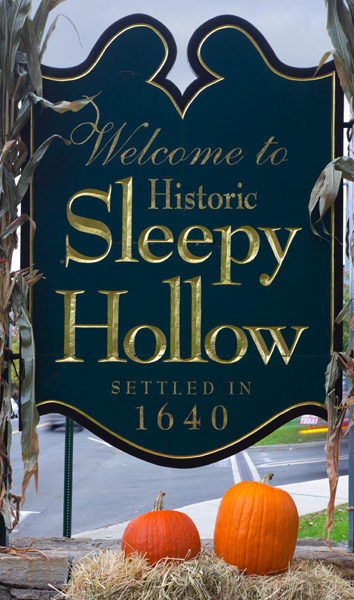
- The Village of Sleepy Hollow -
The Old Dutch Church, Sleepy Hollow Cemetery, and The Headless Horseman Bridge
Westchester County, New York

This, the primary destination of my trip, is the place that was made world-famous by Washington Irving's 1820 short story, "The Legend of Sleepy Hollow." Yes, it is a real place, and you can walk in the footsteps of Ichabod Crane and the Headless Horseman here - although the characters, in contrast to the setting of their story, are entirely fictional. Today, many of the landmark features of Sleepy Hollow, as described by Irving, still exist very much as they did in the late 1700's.
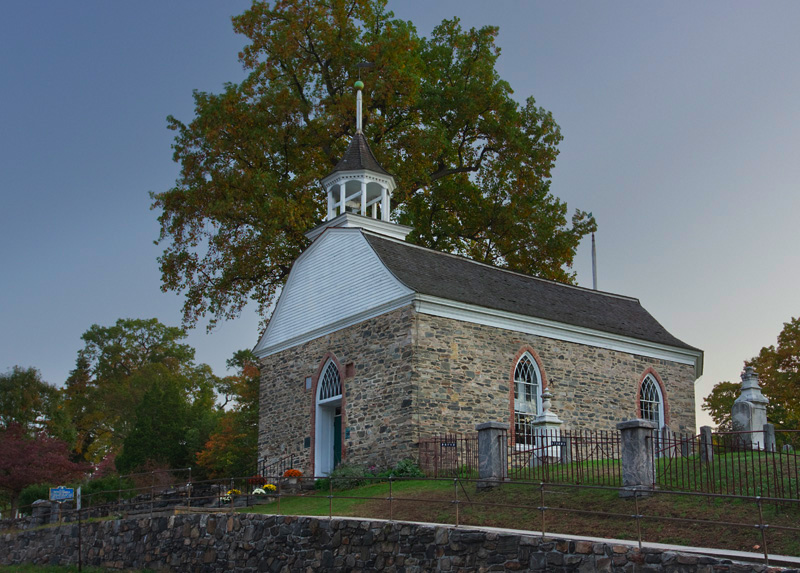
Above, the Old Dutch Church of Sleepy Hollow
The Old Dutch Church is an important location in the story, since the Headless Horsman is said to have been laid to rest in the centuries-old burial ground here, where he returns each night from his spectral rides. The church was built in 1697, although the burial ground apparently predates the church by more than 50 years. This is the oldest church in the state of New York.
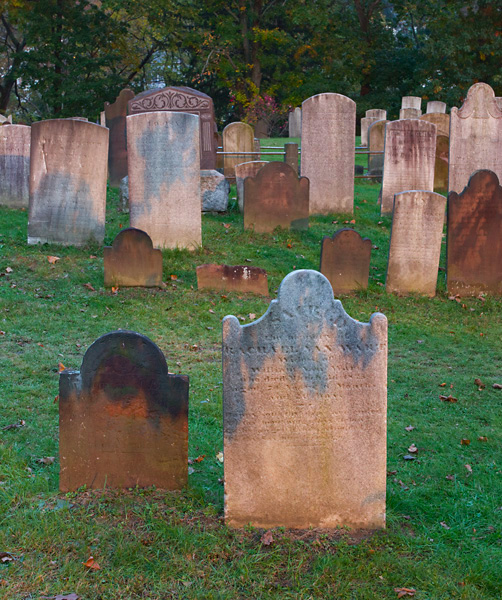
Dating as far back as 1638, the burial ground that surrounds the church offers all of the beauty and creepiness that one could hope for from an ancient cemetery. Since the founding community here was Dutch in the 1600's, some of the markers bear the Dutch language, as on the stone below; they also commonly feature whimsical representations of angels, or perhaps of departed souls, which typically appear as winged heads near the top of each marker:
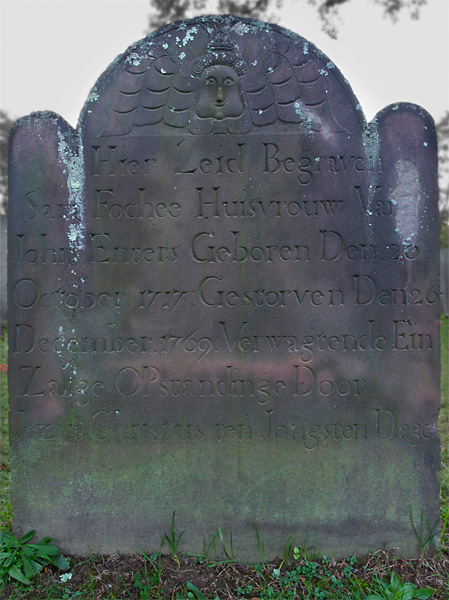
Many of the ancient stones are so timeworn that they bear cracks, stains, flaking, and sometimes even show signs of extensive repair. Such weathering, however, often results in subtle colors, shapes and textures that give these markers a profound character that could only be acquired over time:
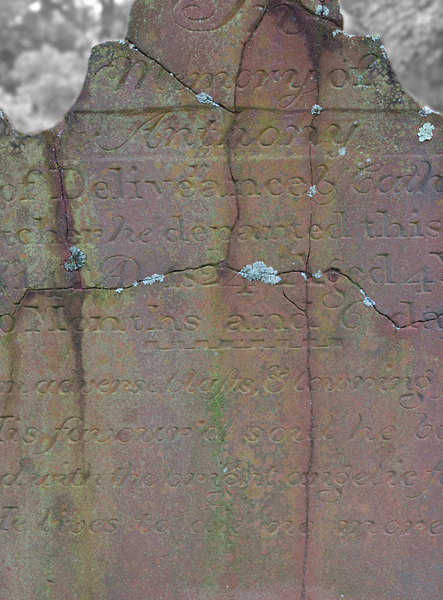
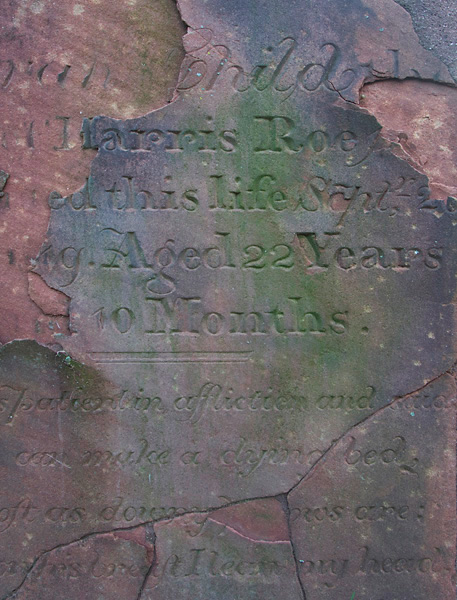
The burial ground of the Old Dutch Church is often confused with the adjacent Sleepy Hollow Cemetery; this confusion is understandable, since the two properties are directly joined, with no dividing barrier between them, so that each flows naturally into the other. But the much larger public cemetery of Sleepy Hollow is really a later development of 1849. Washington Irving himself supported the establishment of the cemetery; he wrote, "I have no pecuniary interest in it, yet I hope it may succeed, as it will keep that beautiful and umbrageous neighborhood sacred from the anti-poetical and all-leveling axe. Besides, I trust that I shall one day lay my bones there." Indeed, he did just that.
Below, the Irving family burial plot:
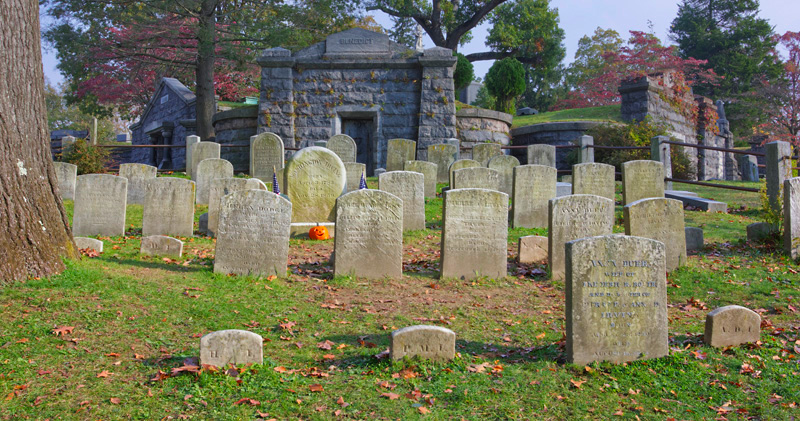
Washington Irving's grave can be identified above by the small jack-o-lantern that someone placed as a decoration.
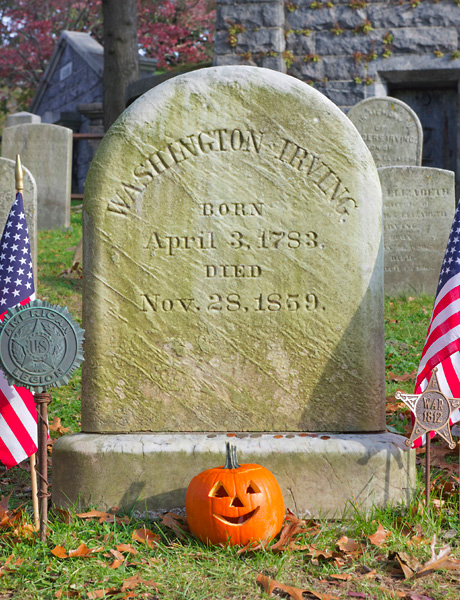
With its many examples of fine sculpture, Sleepy Hollow Cemetery is filled with both historic and artistic interest:
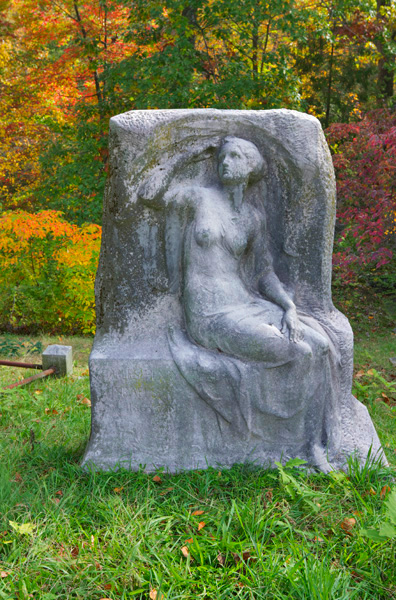
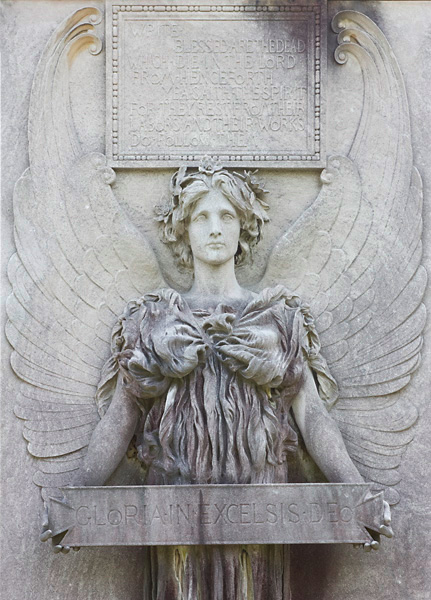
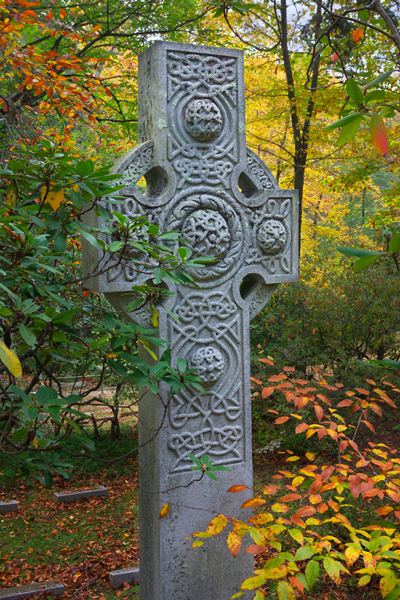
Below: spanning the scenic Pocantico River, this is the Headless Horseman Bridge - or, at least, a plausible replica. This wooden bridge is found in the cemetery, and was intended to resemble the original bridge described in the legend. This bridge stands about a quarter-mile upstream from the one used by Ichabod Crane and the Horseman in the 1700's. No one knows exactly what the original bridge looked like, since photography didn't exist at that time, and the wooden structure has long since rotted away. Over the centuries, there have been at least four bridges crossing the river near this location.

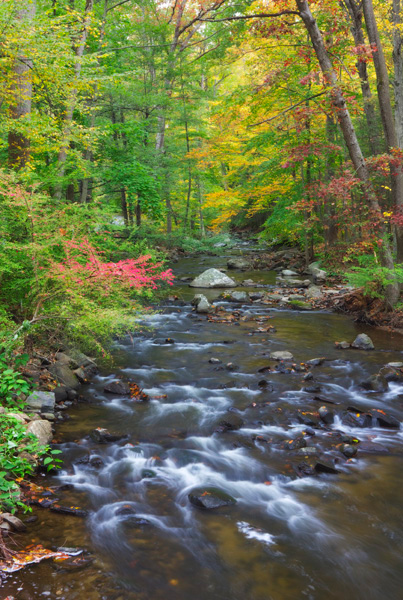
The Pocantico River, as seen from the Headless Horseman Bridge. Pocantico (pronounced po-CAN-tih-co) is a name of Native American origin.
There are other scenic bridges to be found throughout Sleepy Hollow. Below, one of three elegant stone bridges in the Rockefeller Preserve, a state park adjacent to the cemetery:
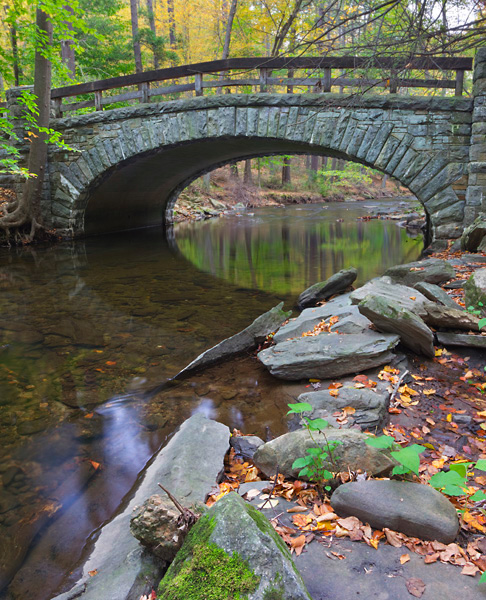
The Rockefeller Preserve is the product of John D. Rockefeller and his son. Around the turn of the century, they acquired some 3,000 acres of land in Sleepy Hollow to establish a private estate known as Pocantico Hills. There, they maintained most of the land in a rural, wooded state, but built 55 miles of carriage roads for access to the outdoors. Although on private land, these roads were opened for public equestrian use as soon as they were completed. Today, these paths are still used for the same quiet purpose. As connected properties, both Sleepy Hollow Cemetery and the Rockefeller Preserve together form one continuous area that serves to maintain the antique character and legendary atmosphere of old Sleepy Hollow.
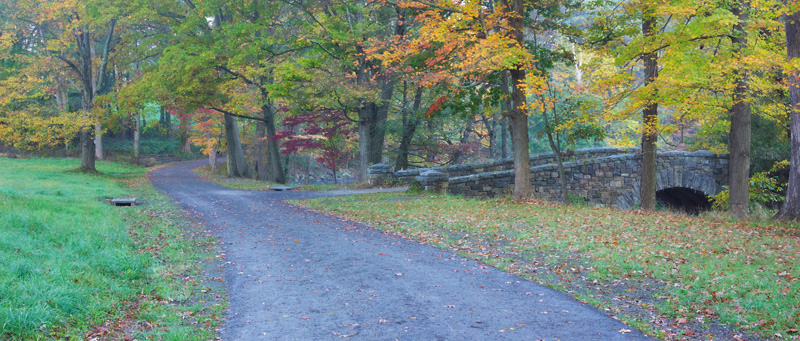
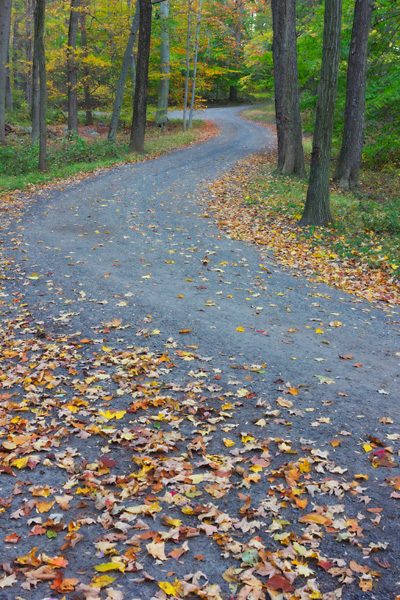
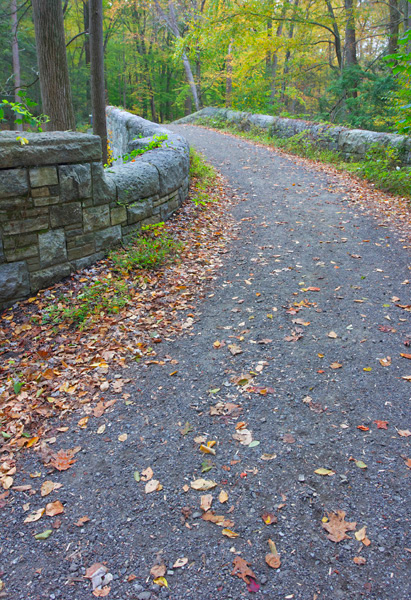
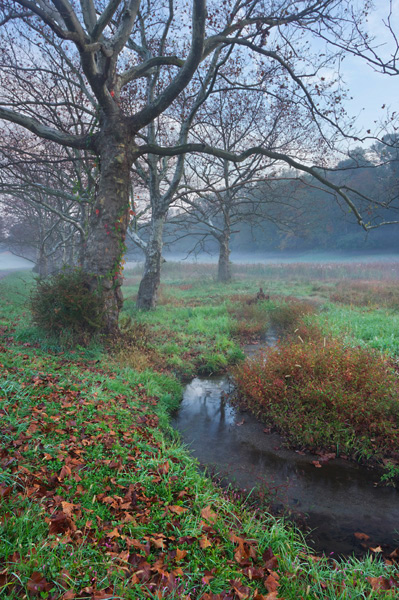
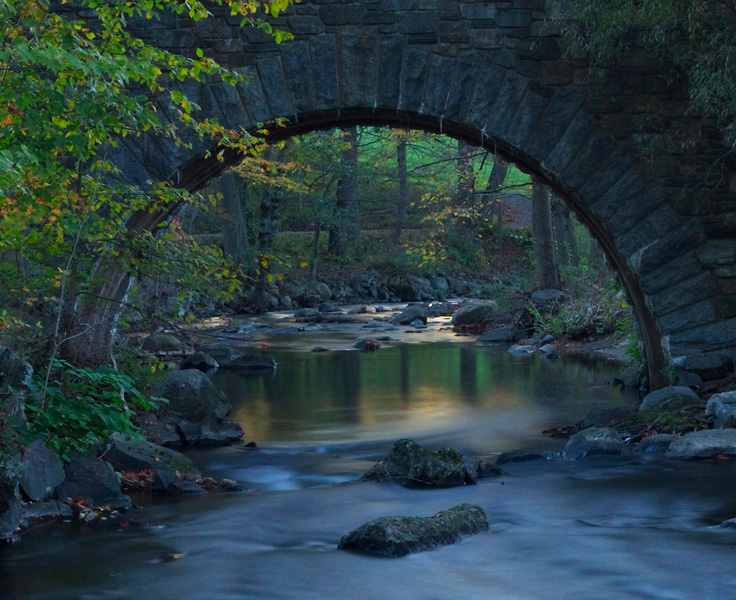
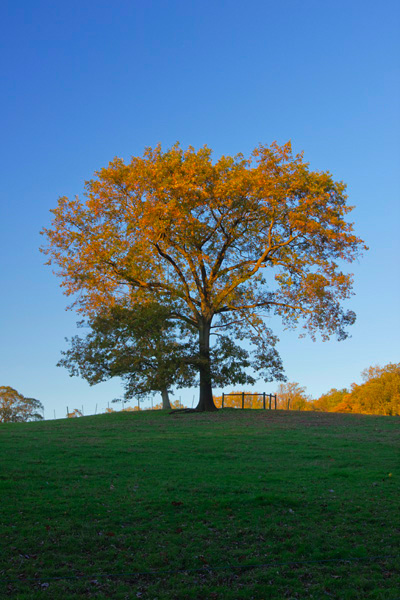
For a much more detailed presentation about Sleepy Hollow,
you might enjoy viewing "The Real Sleepy Hollow" elsewhere on my site.
or